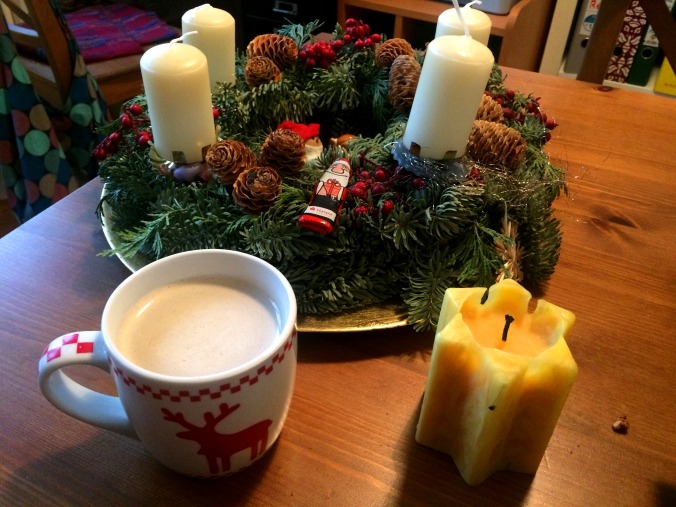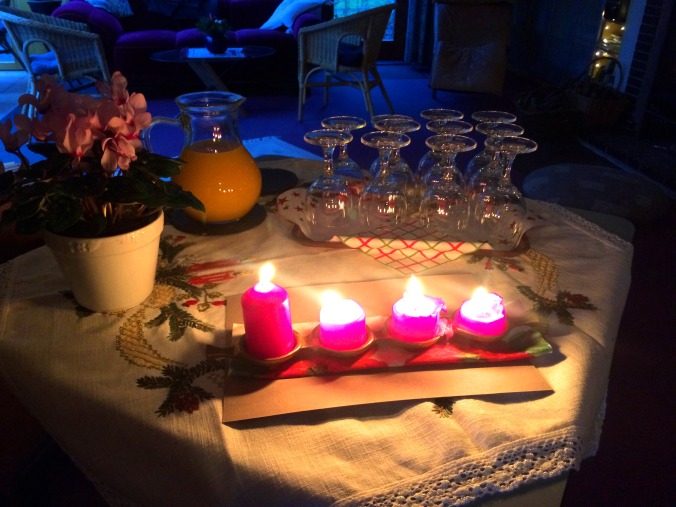I’m sitting on a train to Berlin, listening to Christmas carols (all the oldies from my childhood), and sipping a “Lebkuchen” (aka. Gingerbread) latte. It’s my favorite time of the year filled with all my favorite things – cue Julie Andrews – and all should be right with the world.
And yet…
This season of so much light, cheer, sugar, and spice has also been a reminder that all is not right in the world. Political, racial, and national divides paper my Facebook news feed. Bombs fall on Aleppo as young and old upload their final goodbyes to Youtube. And the news screens in the subway show images of a truck plowed into a Christmas market in Berlin. Homeless men and women huddle into sleeping bags under bridges and my migrant students’ phones and ID-cards are stolen from the locker room during gym class – their connection to the homes they’ve left behind and their new identities and claims to a new life in a new home.
In a time when we are singing about joy and peace, we desperately wish for the world to be well, to be whole. But the reality is staring us in the face – just behind the veil of crowded shopping malls, twinkling lights, and honeyed hams – the world is sick and broken.
So what do we do? Do we cancel Christmas? Unplug the lights, drag the tree to the curb, throw some mothballs on the Christmas sweaters, and unstuff the stockings?
As someone who spends the entire year looking forward to the holiday season and all its traditions, I don’t think that’s the answer.
But I do think we need to reorient our season on hope – not just finding it for ourselves, but embodying it for others.
The past few Decembers (and the other eleven months when I think no one is listening), I’ve become enamored by a particular Christmas song.
O come, o come Emanuel
And ransom captive Israel
Who morns in lonely exile here
Until the son of God appears
Rejoice! Rejoice! Emanuel
Shall come to thee, o Israel.
With it’s soft, minor harmonies, this song gets me right in the feels every time. It’s a song of solitude and yearning – a song of wandering in the darkness and looking for a light.
One of my neighbors down the street started putting a lantern with a large pillar candle out on their stoop a few weeks back. It reminds me of the ancient traditions throughout northern Europe of creating light as the nights got longer. It’s a little flickering reminder of the spirit of the yule log – light and warmth burning through the longest night. As a Christian, it reminds me of the light of a little child born in Bethlehem – a light in the darkness, a hope for healing, a savior for the lost. Life breathed into God-made-man, God-with-us – Emanuel.
And such is the challenge for all of us – not only during the holidays, but throughout the year. What are we doing to bring light and hope to the lives of others – our loved ones, friends, neighbors, and even our enemies?
As we sit with our families this Christmas, as we bask in the lights of our Christmas trees, and as we test the human limits of Christmas cookie consumption, think about those who are hurting in the world. Think of those who are alone, those who need someone to reach out to them. And then, reach out. Donate, visit, pray, write, call, embrace. Be aware – even if it’s painful – of those who need the warmth, light, and hope of this season, and explore how to embody that hope.
Merry Christmas to all, and to all a hopeful year ahead.





![By Gunawan Kartapranata (Own work) [CC BY-SA 3.0 (http://creativecommons.org/licenses/by-sa/3.0) or GFDL (http://www.gnu.org/copyleft/fdl.html)], via Wikimedia Commons](https://worthajourney.wordpress.com/wp-content/uploads/2016/02/borobudur-nothwest-view.jpg?w=676&h=266)









